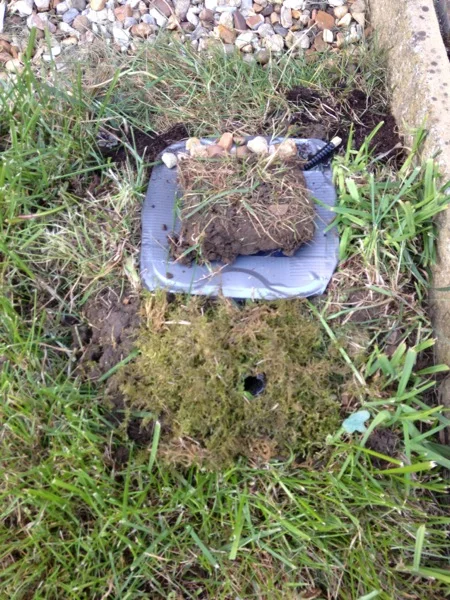2013 Bumblebee season begins
/It's all been rather quiet for the start of 2013 on our bumblebee project due to our new baby project! We were thrilled to introduce Edan to the world in February, and have been very busy since taking good care of him and feeding him every few hours night and day!
I have to admit that last year's lodge is still needing to be cleaned and I haven't fully decided whether to source a colony for study this year or just rely on trying to encourage natural nesting. The other complexity is that my CCTV monitoring room is now Edan's bedroom and I haven't figured out anywhere suitable for all the CCTV equipment, other than perhaps the garage.
Anyway, it's been a moot point, as the bees themselves have been very slow to emerge after all the cold snowy weather we've been having through February and March. I'm sure there were a few false starts for some of them, but we've only seen our first bufftailed queens in the last week.
This weekend was a turning point for the weather and I was able to get out into the garden to cut and shape the grass (more on that later) and also create some more potential nest sites. It's remarkable to think that this time last year we had 21 new queens itching to leave the nest and yet this year we are only just seeing hibernating queens coming out and looking to set up home.
The other remarkable thing is that today alone I saw 9 queens in the garden looking for a nest site. (At least two were there together, so granted it could be two bees who made 9 visit to the garden in total). This is unprecedented - we are used to seeing 1 every few days. It leads me to wonder whether a) their normal habitat has been destroyed or rendered less suitable or b) whether these are our own queens coming back to where they were born; indeed, most of them explored the area where the nest had been sited on the stones by the garage wall.
Anyway - a quick run down of what I've done to create additional nest environments - since all the bees I've seen are definitely looking at ground level and digging down, I figured I needed to do something different to my above-ground boxes - I.e some underground cavities.
First, the grass has been cut (or more correctly, left) in strips that lead to the existing boxes. The bumblebees love to search in the long grass for possible burrow holes and explore the linear edges as a guide - so the strips naturally lead the bumbles to the entrances for the existing boxes (which are tubes hidden in moss).
Next, I have created two underground nest sites, inspired by the buried teapot idea. First is a plastic tub, upside down (thus waterproof) with a tube running down into it. The turf on top can be removed for observation if necessary, and I packed some stones and bedding inside. Any bee that chooses to explore that tube is going to find a 5 star residence!
Whilst packing all my tools away after burying the tub I spotted the baby formula tubs we were sending for recycling. I immediately thought that these two would make great underground cavities, being moisture proof and with a handy clippable lid that would also serve well as an observation hatch. So, today I buried one of those, again running a tube into it and packing it with some stones and bedding and moss.
I tried to make the entrances look authentic with some grass cuttings, but will need to let the surrounding lawn grow to encourage searching.
Here's a picture of the two boxes together.
So, now with underground and on-ground sorted it was time to deal with above-ground. So, I have placed a blue-tit bird box on the fence about a metre above ground - again packing it with bedding material. I've heard numerous folk talk of their blue-tit bird boxes being chosen for bee nests, so I'm hopeful ours will too.
So, looking forward to the next week to see if we get more queens and if they discover what we've laid on for them! :-)








